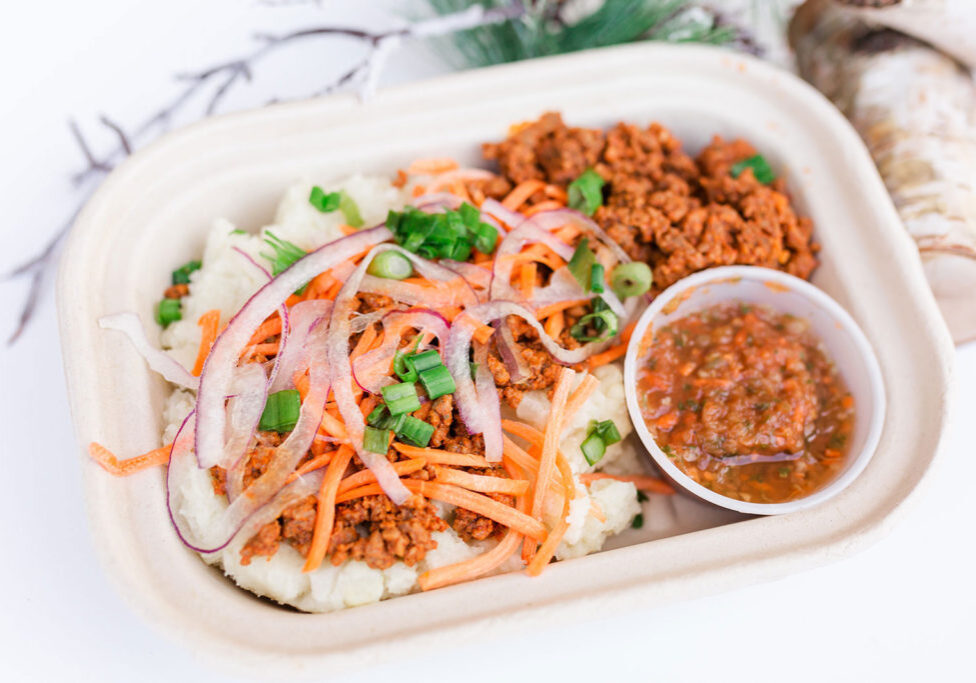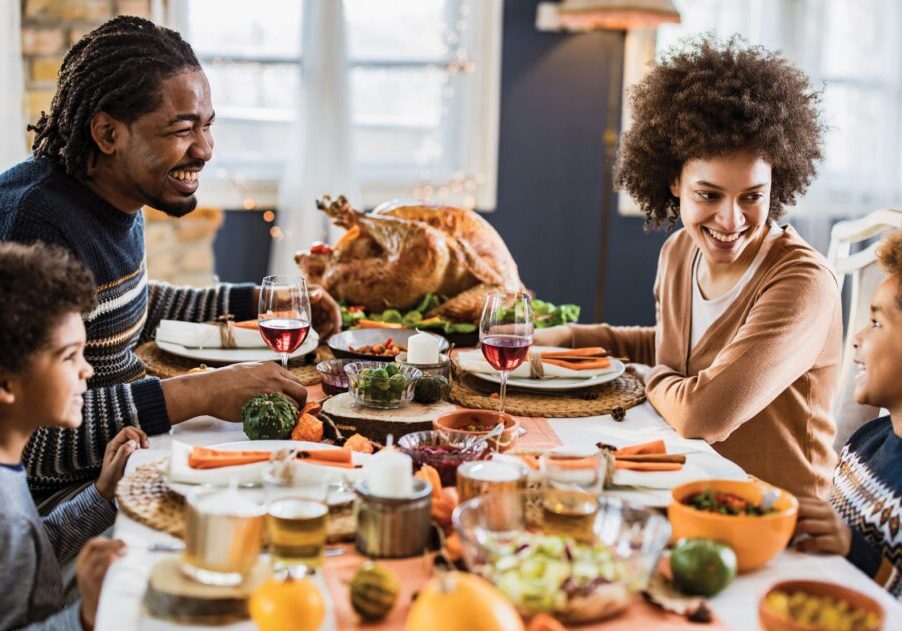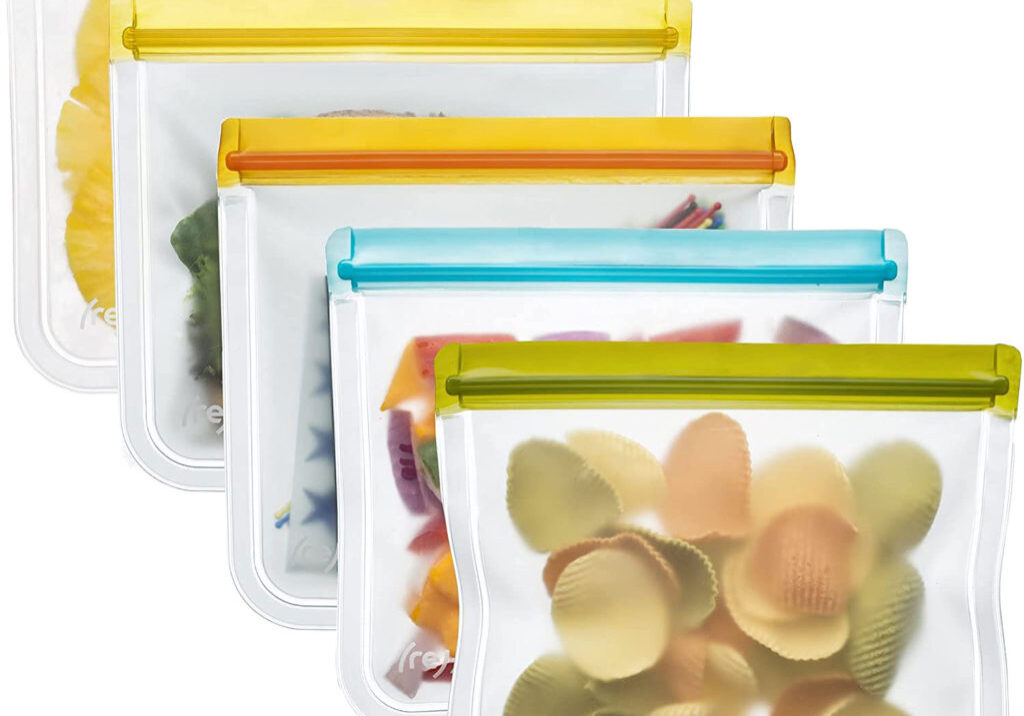From gift wrap and packaging to decorations to party supplies, we can easily get lost in piles of unnecessary plastic during the holidays. A quick shift in attention, however, will lead to finding lots of creative, eco-friendly options. Some categories where going plastic-free will make a difference include:
Party Goods
Whether you are in charge of throwing the big office holiday party or an intimate family holiday dinner, you are in control. Instead of buying disposable plastic utensils and dinnerware, choose paper (recycled is best), bamboo, or even palm leaves. Be sure to use real drink glasses and ditch the plastic straws and stir sticks. Use washable, reusable real cloth for tablecloths and runners. Check your closet or thrift stores for colorful cotton scarves or shawls and add a splash of color to the table. At the grocery store, pass up pre-made and packaged food that comes in plastic containers. Avoid those wrapped in all of that excessive plastic, such as dips and pre-packaged fruit salads. If you’re taking food to a potluck or party, bring it along in regular dishes covered with foil or waxed paper.
Decorations
Although many traditional decorations are mass-produced using plastic, you can still have festive décor minus the plastic.
Make your own. The options here are only limited to your creativity. You can use last year’s holiday wrapping paper, bows, and ribbons to decorate a wreath or create a festive wall hanging. You can sew your own stockings for the fireplace using material from old clothes, or find cute stockings at the thrift store. Secondhand stores are also great sources of interesting decorations, as are yard sales and places like freecycle.org.
Go natural. Consider decorating your home with nature’s beauty by using items like plants, sprigs of holly and fir, twigs and branches, mistletoe, pine cones, popcorn garland, dried citrus rings, cinnamon sticks, wooden ornaments made from cut logs, cranberry garlands, and dried flowers and leaves. Go for a lovely hike outdoors a few weeks before the holiday to collect your special nature décor. Bonus: Everything can be composted after the holiday season.
Trade with friends and family. Many of us get bored of the same old decorations year after year, so by trading with others we can all get a fresh new look for the holiday season. This would be really fun to do with your neighbors along with a block party or progressive dinner party as everyone moves from house to house.
The tree — real or plastic?
After weighing all the pros and cons, experts conclude that real Christmas trees are still better than plastic for the environment. According to the New York Times, a comprehensive study by an environmental consulting firm found that an artificial tree would have to be reused for more than 20 years to be greener than buying a fresh-cut tree annually. These calculations take into account greenhouse gas emissions, use of resources, and human health impacts.
Real trees are also biodegradable, which means they can be easily reused or recycled for mulch and other purposes. On the other hand, most artificial Christmas trees are made of metals and plastics that are not recyclable and ultimately end up in a landfill. Most also contain the petroleum-based polyvinyl chloride, or PVC, which produces carcinogens during manufacturing and disposal. Finally, the living trees grown in farms produce oxygen, reduce carbon dioxide, and provide habitat for wildlife.
Wrapping gifts without plastic
Rather than buying gift paper that’s sold wrapped in plastic, or cellophane, there are plenty of other ways to present your gifts to your loved ones.
- Save gift bags from other events and last year’s holiday season and reuse them year after year.
- Make the wrapping part of the gift by using items like handkerchiefs, scarves, blankets, or place mats.
- Use fun cloth bags of all sizes and patterns to enclose your gift.
- Make your own wrapping paper by using the plain backside of used paper and decorating it with holiday-themed stamps or other design elements.
- For smaller gifts, you can use jars or reusable containers.
- Go rustic by using recycled brown parcel or butcher paper tied in twine or cloth ribbon.
- If you have something fragile, opt for shredded paper instead of polystyrene packing material.
Meaningful, non-plastic gifts
So many gifts are either made out of plastic materials or wrapped in layers of plastic. Consider choosing more meaningful, plastic-free gifts to give to friends and loved ones.
- Make your own crafts from recycled and reused materials.
- Bake yummy organic treats and deliver them in a basket, cloth bag, or ceramic jar.
- Share flowers and produce from your garden and present them as an attractive care package.
- Seek out natural and organic products such as organic cotton clothing, essential oils, and natural beauty products sold in non-plastic containers.
- Opt for an experience like hiking, taking an art class, attending a music or theater performance, visiting a museum, or going to a sports event.
Posted in: Health & Nutrition
Comment Policy: All viewpoints are welcome, but comments should remain relevant. Personal attacks, profanity, and aggressive behavior are not allowed. No spam, advertising, or promoting of products/services. Please, only use your real name and limit the amount of links submitted in your comment.
Trackbacks
Leave a Reply
You Might Also Like...

Worldwide Epilepsy Awareness Day
Worldwide Epilepsy Awareness Day Wear Purple On March 26th To Support Kaia And Others With Epilepsy Kaia’s first seizure happened in fifth grade. Her mother, Rita Davis, had asked Kaia […]

How to Turn Time Wasters into an Opportunity for Mindfulness
As I approach yet another bright red traffic light, I can feel my heart begin to pound and irritability surge through my veins. These traffic lights are always getting in […]

Not Just for Taco Tuesday – Salsas Spice Up Any Day
As a staple on most tables for Taco Tuesdays, salsa is one of my favorite condiments. The blend of peppers, spices and tomatoes, with just the right amount of heat […]

Healthy Holiday Feasting
The holiday season is upon us, which also means that feasting season has begun! Whether hosting family and friends at your home, contributing to a potluck or attending family gatherings […]





[…] ‘Tis The Season To Go Plastic-Free […]